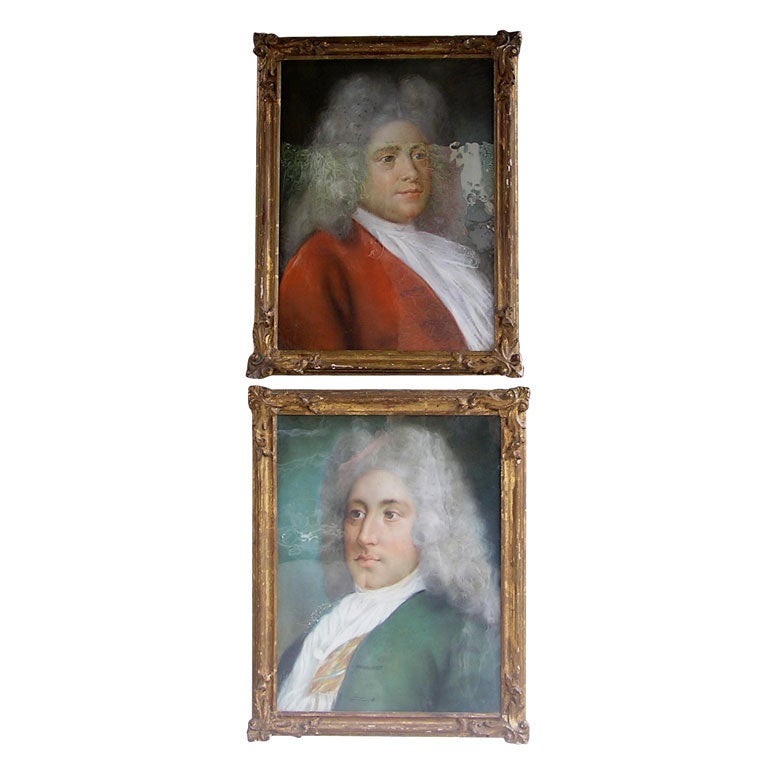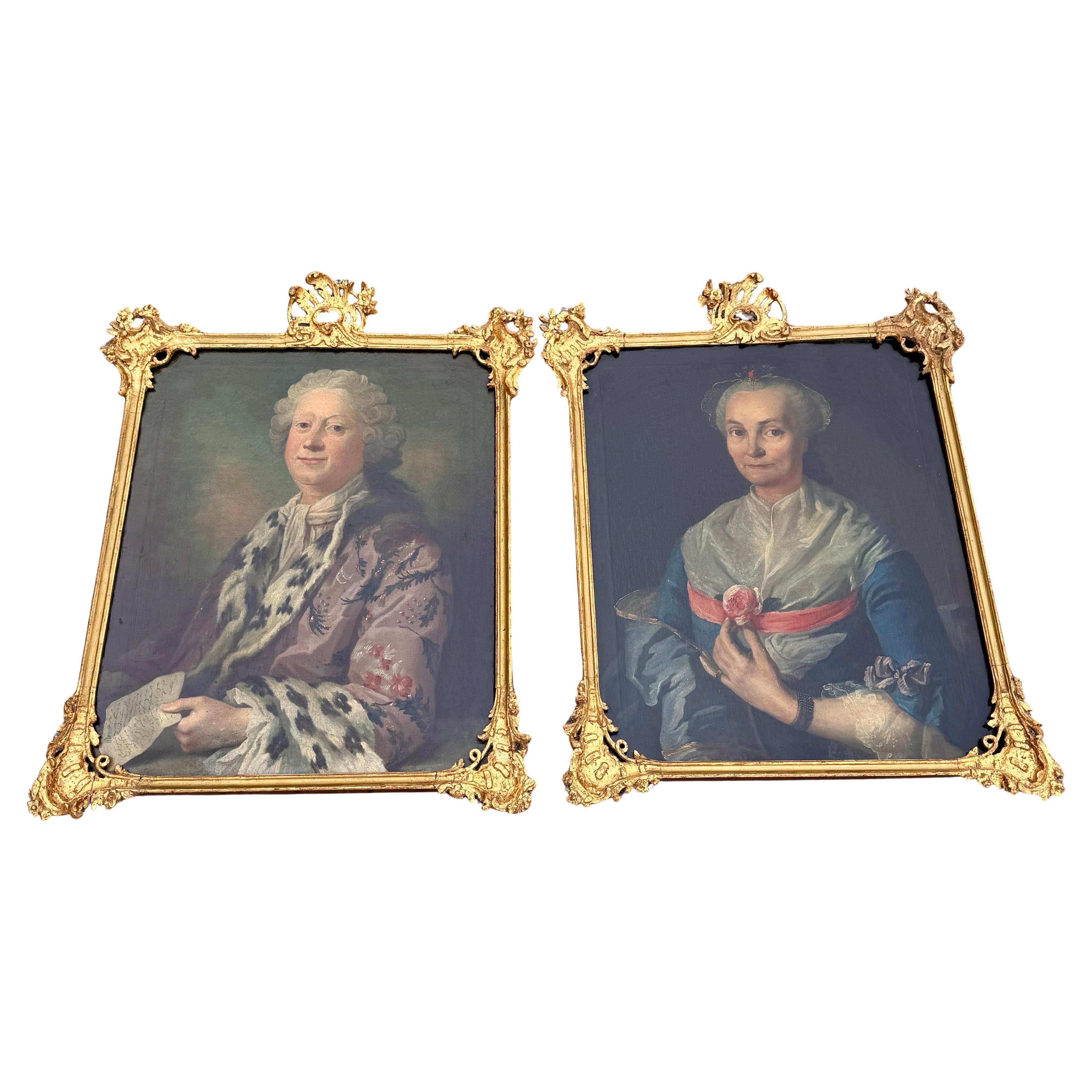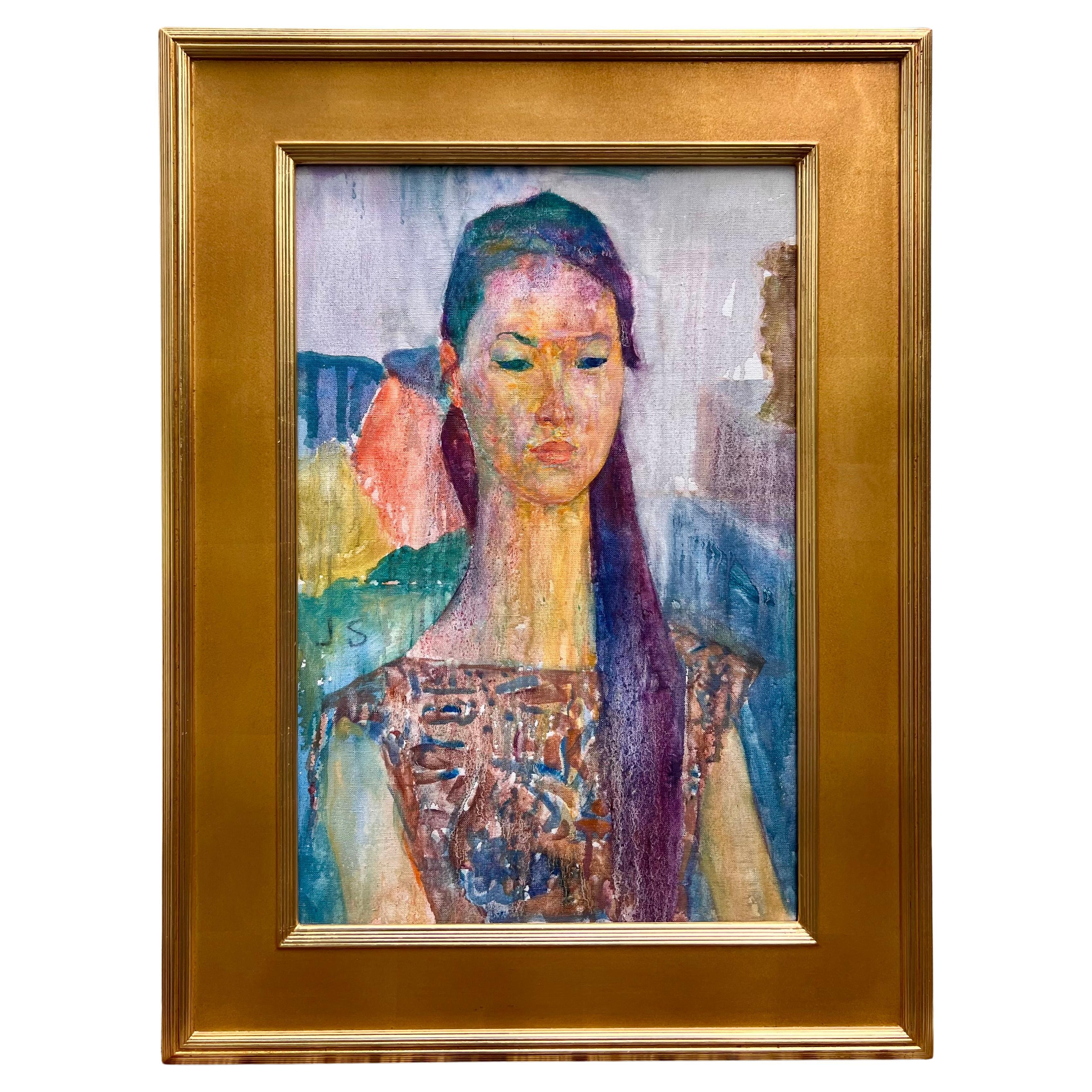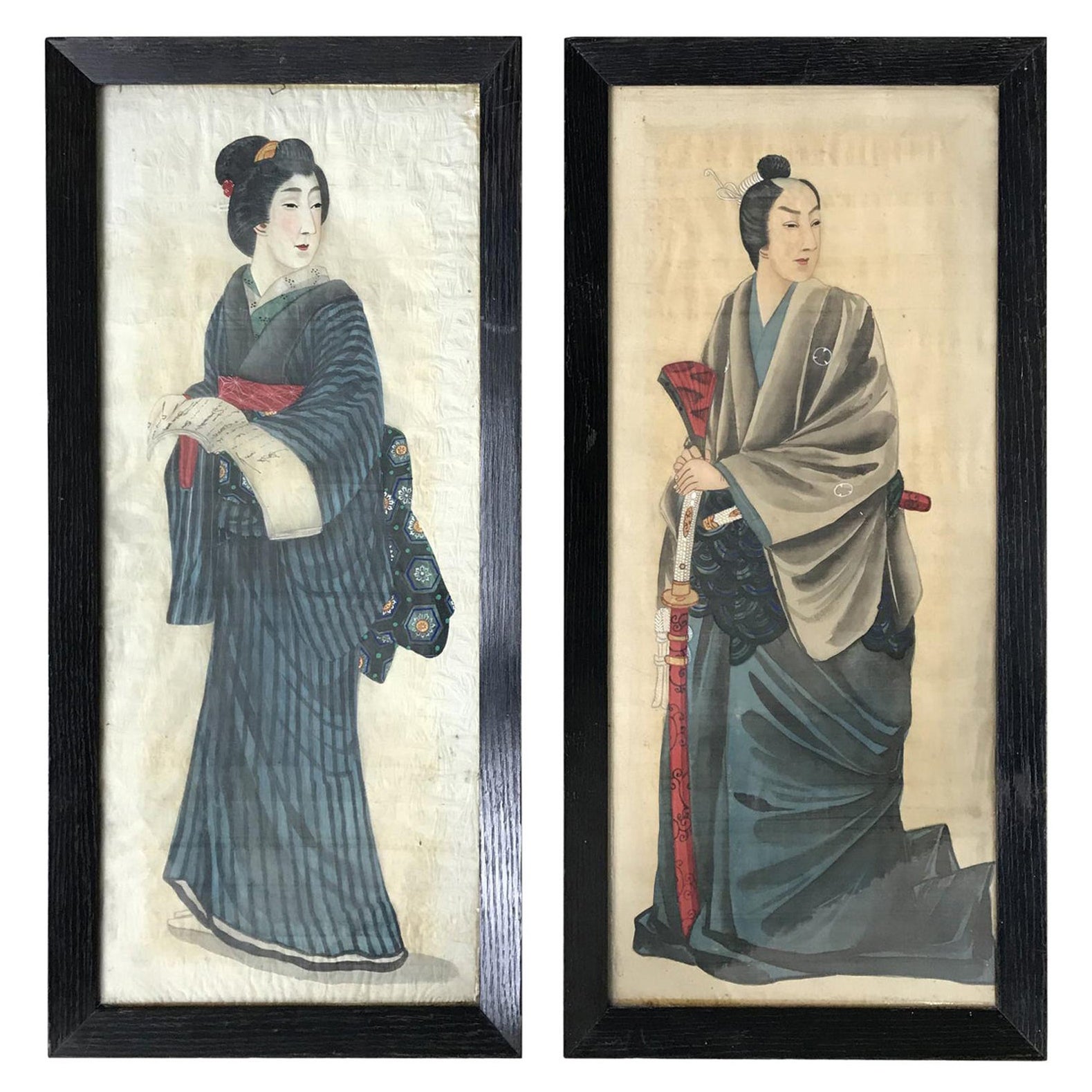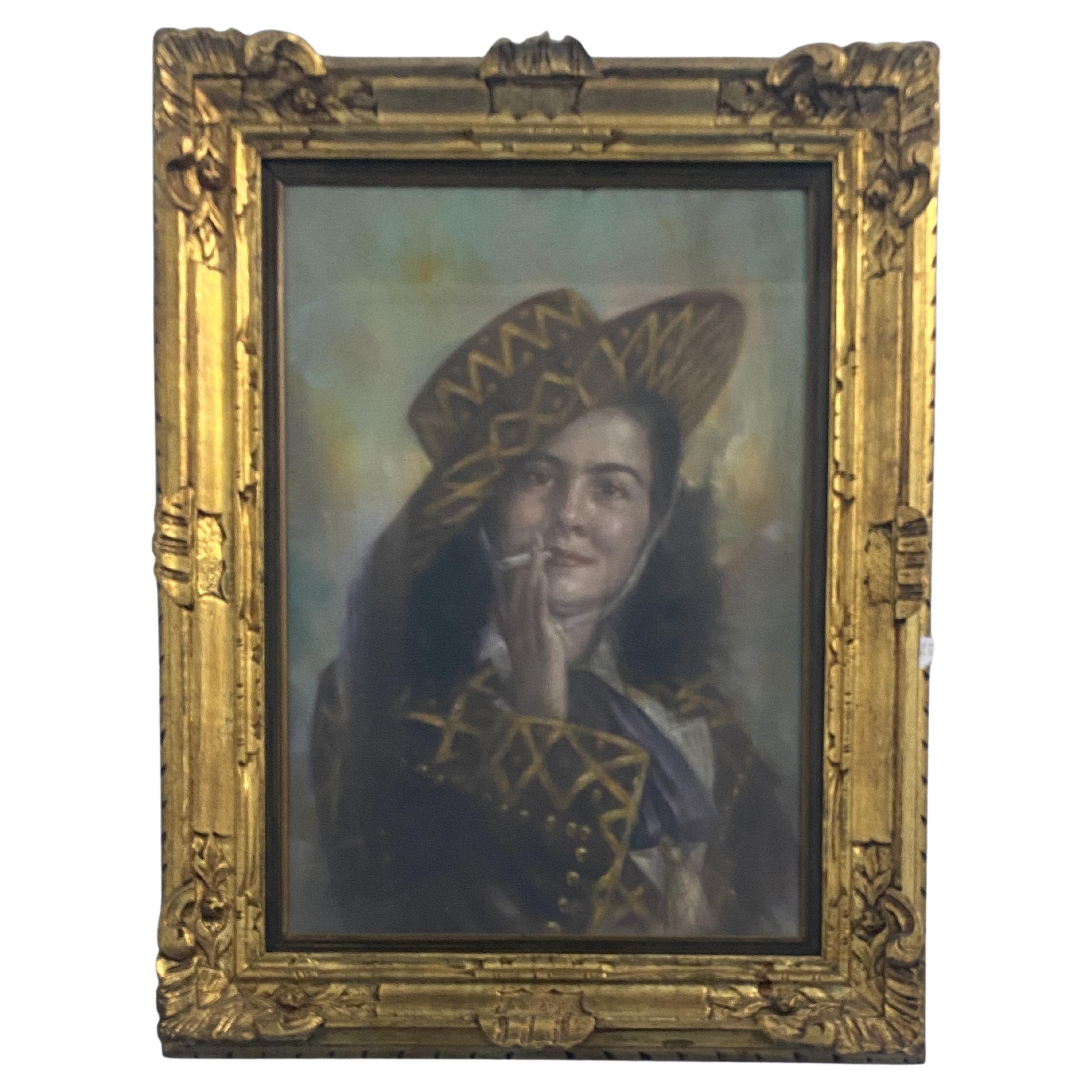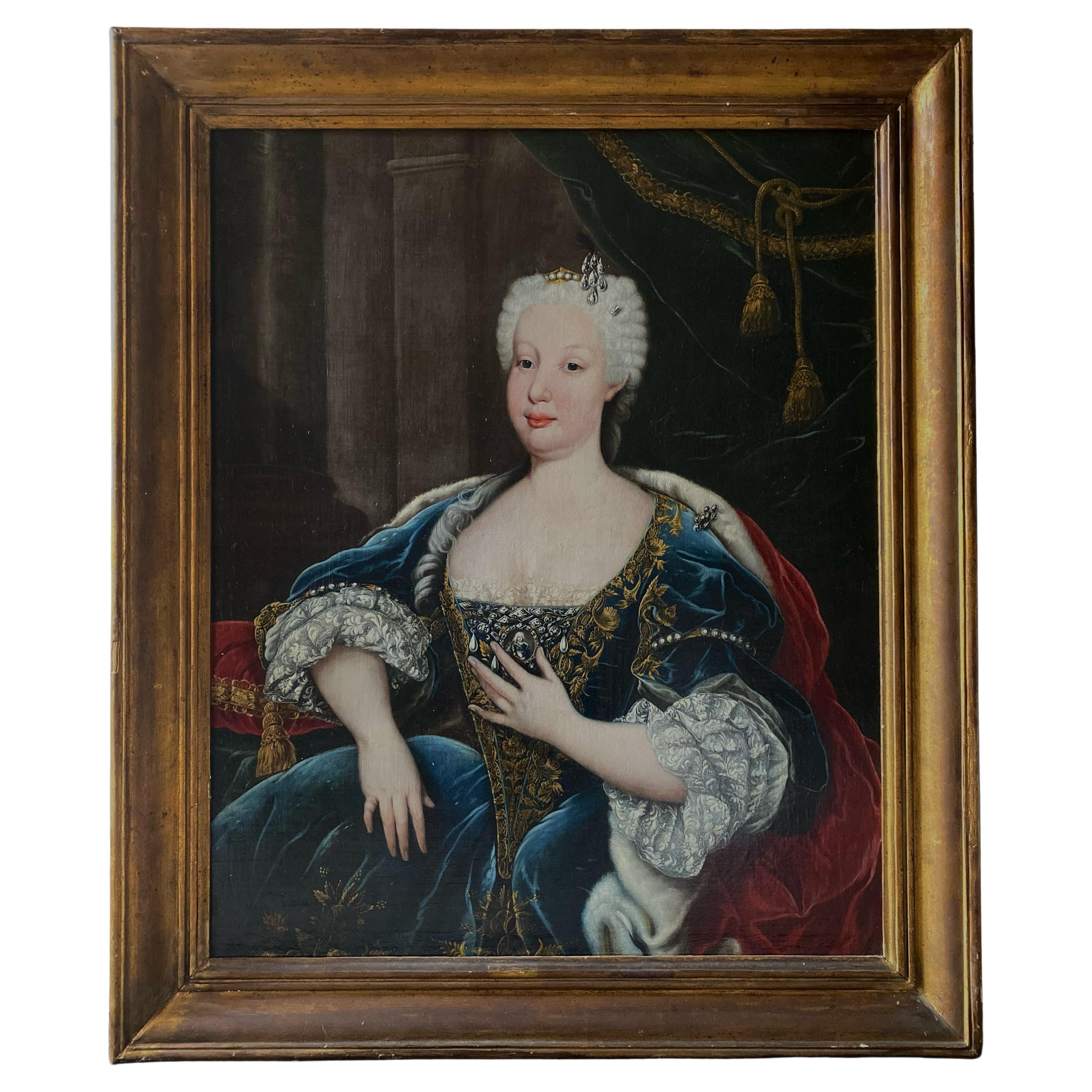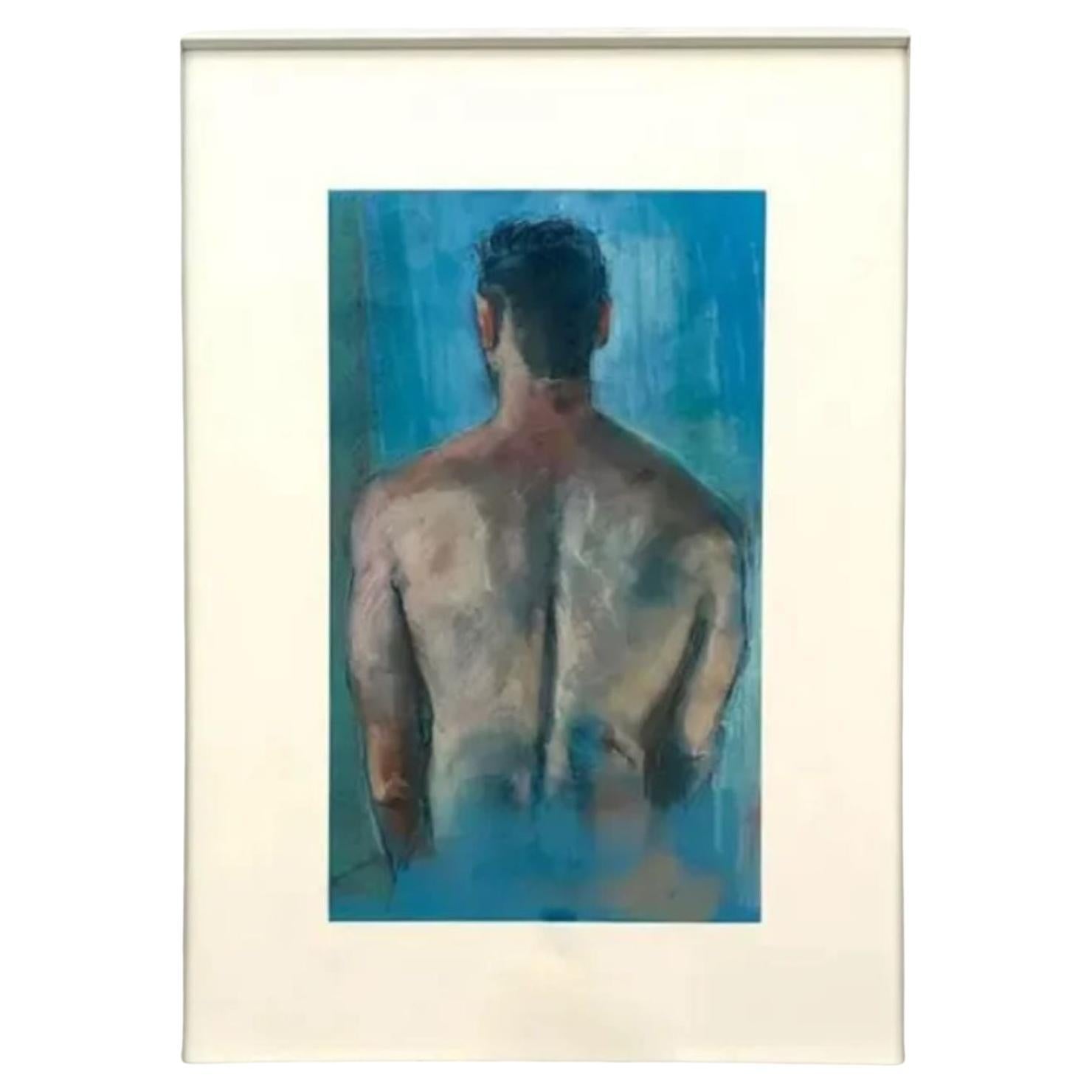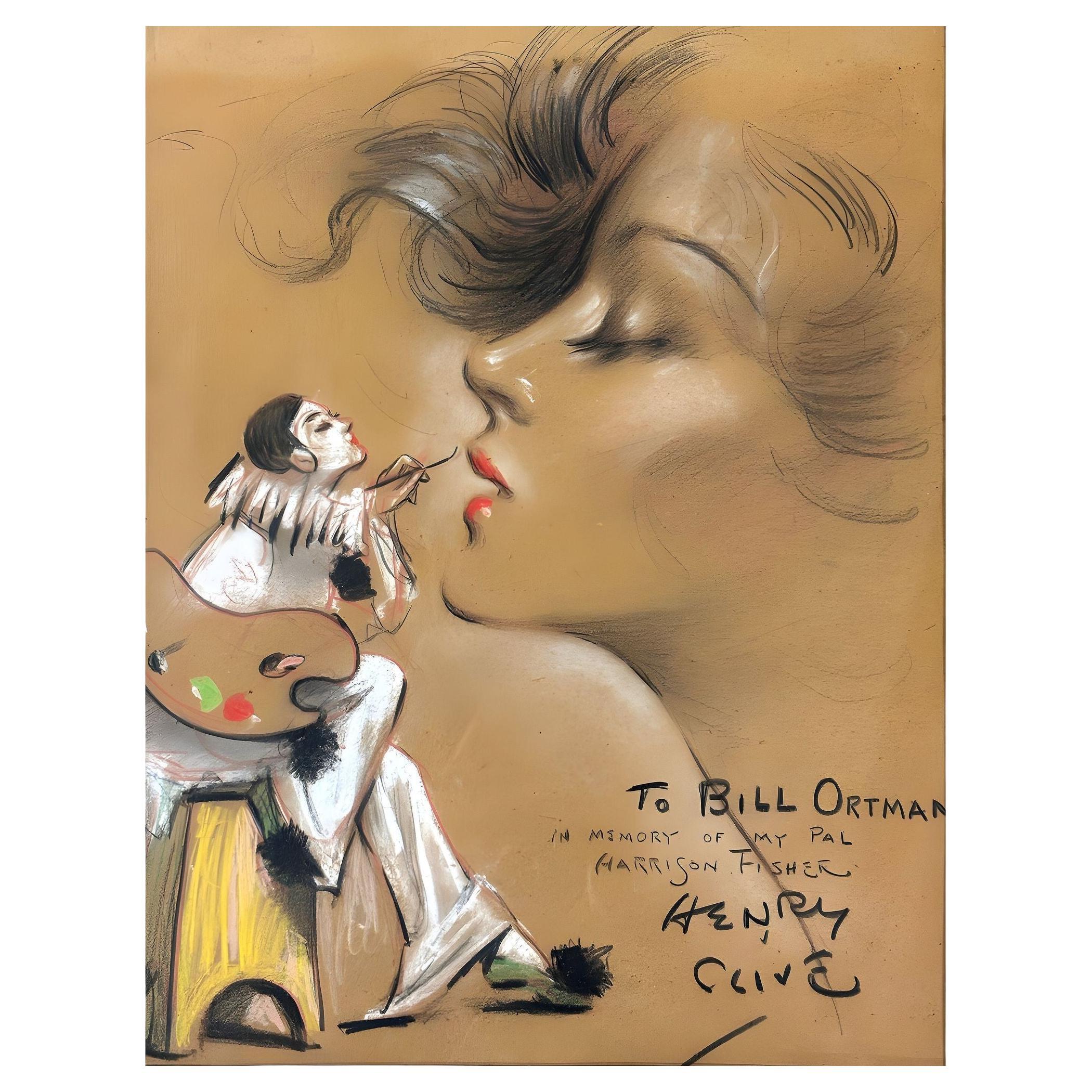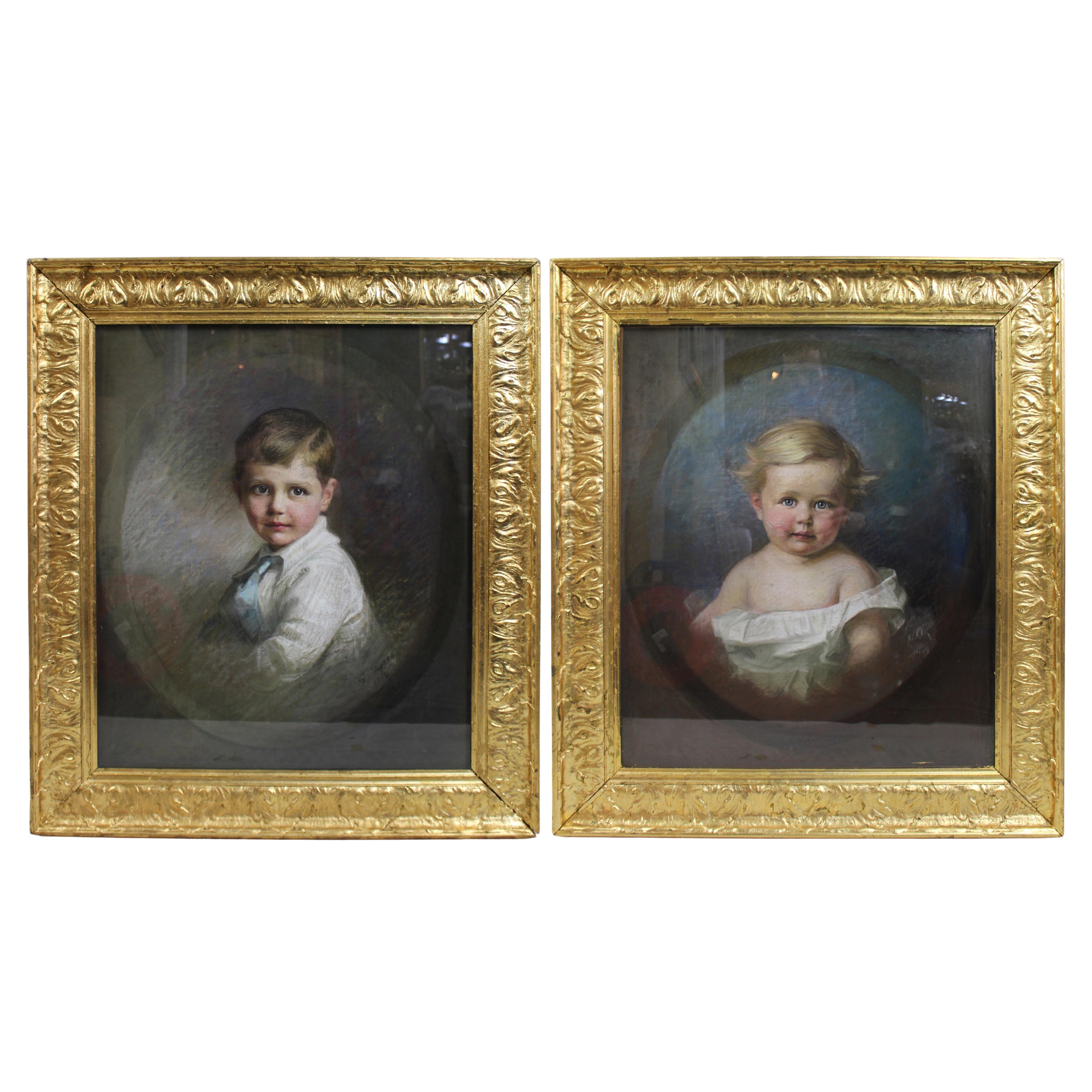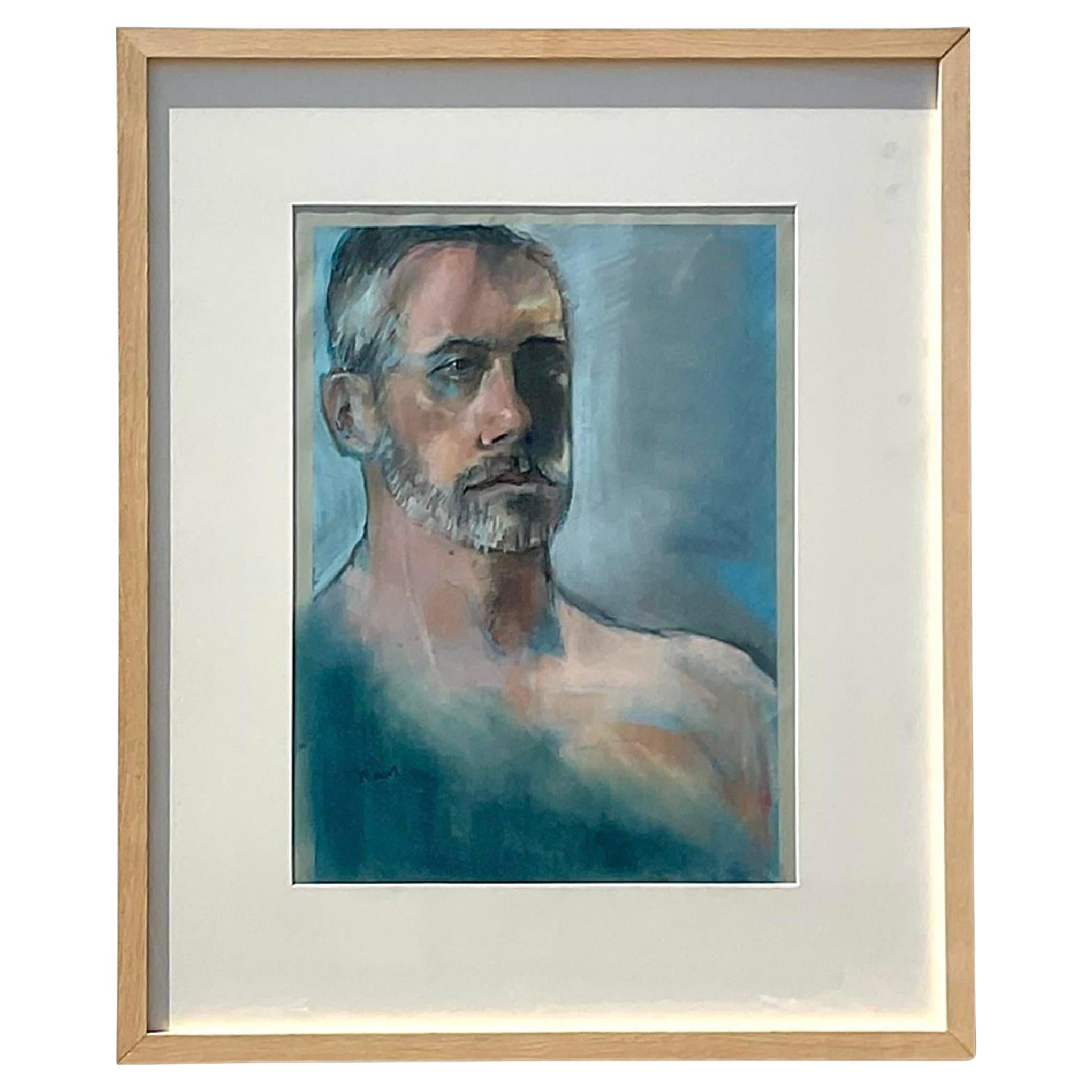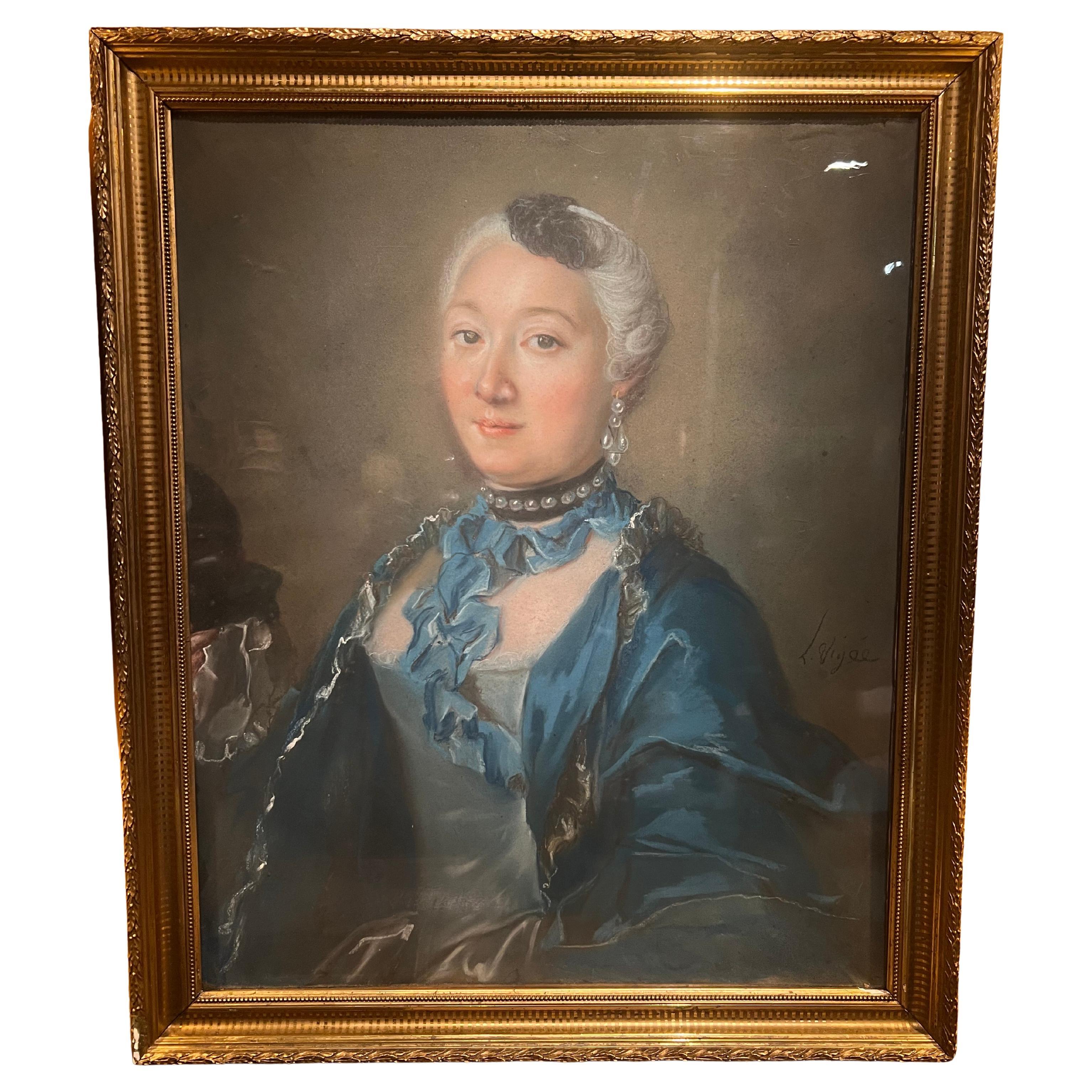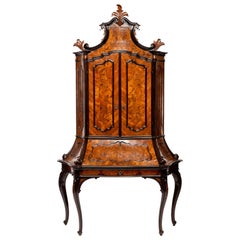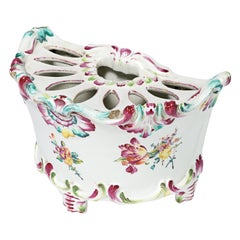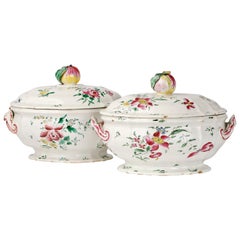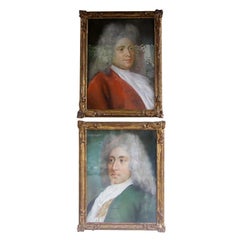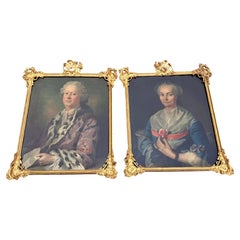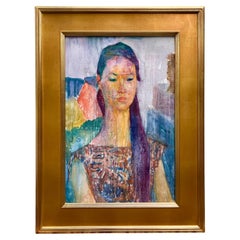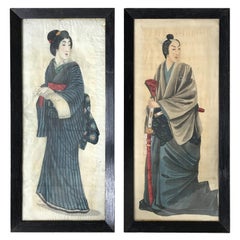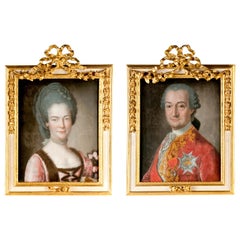
Pair of Italian Rococo Pastels on Silk Portraits by Joseph De Saint Michel, 1769
View Similar Items
Video Loading
Want more images or videos?
Request additional images or videos from the seller
1 of 21
Pair of Italian Rococo Pastels on Silk Portraits by Joseph De Saint Michel, 1769
$9,585.15List Priceper set
About the Item
- Creator:Joseph de Saint-Michel (Painter)
- Dimensions:Height: 28.35 in (72 cm)Width: 19.69 in (50 cm)Depth: 2.37 in (6 cm)
- Sold As:Set of 2
- Style:Rococo (Of the Period)
- Materials and Techniques:
- Place of Origin:
- Period:1760-1769
- Date of Manufacture:1769
- Condition:Minor losses. Minor fading. Some additions to the painting.
- Seller Location:Milano, IT
- Reference Number:1stDibs: LU4352216341362
About the Seller
4.3
Vetted Professional Seller
Every seller passes strict standards for authenticity and reliability
Established in 1860
1stDibs seller since 2018
21 sales on 1stDibs
Associations
International Confederation of Art and Antique Dealers' Associations
Authenticity Guarantee
In the unlikely event there’s an issue with an item’s authenticity, contact us within 1 year for a full refund. DetailsMoney-Back Guarantee
If your item is not as described, is damaged in transit, or does not arrive, contact us within 7 days for a full refund. Details24-Hour Cancellation
You have a 24-hour grace period in which to reconsider your purchase, with no questions asked.Vetted Professional Sellers
Our world-class sellers must adhere to strict standards for service and quality, maintaining the integrity of our listings.Price-Match Guarantee
If you find that a seller listed the same item for a lower price elsewhere, we’ll match it.Trusted Global Delivery
Our best-in-class carrier network provides specialized shipping options worldwide, including custom delivery.More From This Seller
View AllRococo Italian Bureau-Cabinet, Milan, circa 1760
Located in Milano, IT
Bureau-cabinet with fold-down writing desk
Lombardy, third quarter of the 18th century
Walnut with carved decoration and walnut-burl veneer; applied ebonized wood trim and cornice
...
Category
Antique 1750s Italian Rococo Cabinets
Materials
Walnut
Rococo Italian Maiolica Flower Pot Pasquale Rubati, Milano, 1770 circa
By Pasquale Rubati
Located in Milano, IT
Maiolica flower pot “a mezzaluna” with support feet
decorated with little bunches of flowers
Pasquale Rubati Factory
Milan, circa 1770
5.5 in X ...
Category
Antique 1770s Italian Rococo Ceramics
Materials
Maiolica
Pair of Italian Maiolica Tureens, Ferretti Manufacture, Lodi Circa 1770 - 1780
By Antonio Ferretti
Located in Milano, IT
Pair of maiolica tureens
Antonio Ferretti Manufacture
Lodi, circa 1770-1780
Maiolica polychrome decorated “a piccolo fuoco” (third fire).
a – 8.66 x 11.02 x 7.48 in (22 x 28 x 19...
Category
Antique 1770s Italian Rococo Ceramics
Materials
Maiolica
Ancient Italian Pair of Armchairs in “Petit Point” Embroidery, Turin Circa 1750
Located in Milano, IT
Pair of carved walnut armchairs covered in “petit point” embroidery
Turin, circa 1750
They measure 33.8 in (86 cm) in height; 17.32 in (44 cm) in height to the seat; 25.98 in (66 cm...
Category
Antique Mid-18th Century Italian Rococo Armchairs
Materials
Wool, Walnut
Maiolica Bottle Cooler Joseph Hannong, Strasbourg France, circa 1771
By Joseph Hannong
Located in Milano, IT
Bottle cooler
Manufacture Joseph Hannong
Strasbourg, France, circa 1771
Maiolica polychrome decorated “a piccolo fuoco” (third fire)
It measures 7.40 in in height x 9.64 in diam...
Category
Antique 1770s French Rococo Vases
Materials
Maiolica
Pair of Ancient Italian Maiolica Flower Pots Milan, Rubati Factory, 1770 circa
By Pasquale Rubati
Located in Milano, IT
Maiolica flower pot “a mezzaluna”
decorated with trompe l’oeil
Pasquale Rubati Factory
Milan, circa 1770
Measures: each 4.7 in (cm 12) x 5 in (c...
Category
Antique 1770s Italian Rococo Ceramics
Materials
Maiolica
You May Also Like
Pair of Austrian Pastel Portraits
Located in Charleston, SC
Pair of Austrian pastel portraits of country gentlemen in original carved wood gilt frames. Portraits retain the original glass.
Category
Antique 18th Century and Earlier Austrian Paintings
$15,000 / set
Pair of Swedish 18th Century Rococo Oil Painting Portraits
Located in Haddonfield, NJ
Set of two noble male and female oil paintings in period delicate ornate Rococo wood frames. This pair of highly detailed portraits were purchased at a Swedish estate in the 1970's.
...
Category
Antique Late 18th Century Swedish Rococo Paintings
Materials
Canvas, Wood
"Portrait of a Woman, Seated" by Joseph Solman
By Joseph Solman
Located in Wiscasset, ME
Oil on canvas, signed with initials center left. Measures 32" x 23.5" including the frame.
Provenance:
ACA Galleries, NYC
Bradbury Art and Antiques, Wiscasset, Maine
Brought to Am...
Category
Mid-20th Century American Mid-Century Modern Paintings
Materials
Paint
Pair of Japanese Costume Portraits Painted on Silk, 1920's
Located in London, GB
Two portraits of Japanese man and women in traditional costume painted on silk, circa 1920, in their original frames. Details show the exquisite tradit...
Category
Vintage 1920s Japanese Art Deco Decorative Art
Materials
Wood
Antique Italian pastel painting "Portrait of a Woman" Italy , signed, 1963
Located in Traversetolo, IT
Stunning pastel painting " Portrait of a Woman" signed, executed in Italy in 1963, the author demonstrates good skill in portraying the female figure ,the details of the dress are ex...
Category
Vintage 1960s Italian Mid-Century Modern Paintings
Materials
Canvas, Wood, Crayon
Portrait of D. Maria Bárbara De Bragança, Circle of Louis-Michel Van Loo
By H. van Loon
Located in Lisboa, PT
PORTRAIT OF D. MARIA BÁRBARA DE BRAGANÇA (1711-1758), QUEEN OF SPAIN
Circle of Louis-Michel van Loo (1707-1771)
Oil on canvas
Her Royal Highness, the Infanta Maria Barbara of Braganza (1711-1758) was the first-born child of King John V of Portugal (1689-1750) and his queen consort Maria Anna of Austria (1683-1754). Born in December 1711, she had the Convent Palace of Mafra built in her honour following a vow made by her royal father. Her status as Princess of Brazil, inherent to 18th century Portuguese presumptive heirs, would however be superseded once the queen gave birth to two male princes, D. Pedro (1712-1714) and D. José (1714-1777), preventing her from ascending to the throne.
Daughter of one of the most illustrious monarchs of his time, Maria Barbara was carefully educated to become a fond admirer of the arts, and of music in particular, having had the Italian composer Domenico Scarlatti (1685-1757) as her music teacher.
On the 10th January 1723 the young princess was betrothed to the Infante Ferdinand of Spain (1713-1759), eldest son of King Philip V (1683-1746). Six years later, on the 19th January, she entered her new country in a carefully choreographed ceremony that became known to history as the “Exchange of the Princesses”. This unique event took place on a specially built Bridge-Palace, a wooden, luxuriously decorated structure that included various modules and rooms, on both banks of the river Caia, the natural border between the town of Elvas in Portugal and of Badajoz in Spain. Simultaneously, on the same day that the Portuguese Infanta crossed the border to marry the Spanish Crown Prince, her new sister in law, the Infanta Mariana Victoria of Bourbon (1718-1781), her husband’s sister, crossed the same bridge in the opposite direction to marry Prince D. José, the Portuguese heir to the throne.
Once married, Maria Barbara would spend 17 years as Princess of Asturias, only becoming Queen of Spain at her husband’s accession following the death of Philip V in 1746. She is portrayed in the 1743 painting by Louis-Michel van Loo (1707-1771) now in the Prado Museum, in which Philip V had himself represented with all his close family.
The new Queen would take an important role at court eventually becoming the liaison between her husband and the King of Portugal, particularly throughout the negotiations for the Treaty of Madrid (1746-1750). Maintaining her interest in music, she patronized the Italian castrato singer Farinelli (1705-1782) while remaining close to her old master Scarlatti, having herself composed some sonatas for a large orchestra. She would also commission and fund the building of the Royal Salesians Monastery complex in central Madrid, where both her and Ferdinand VI are buried.
The portrait we are presenting for sale shows the Queen in half-length, turning left at three quarters. She is wearing a blue low-cut dress embroidered with flowers and foliage, over a lace cuffed white blouse, and an ermine cloak pined on the left-hand side by a diamond broach. The powdered hair style is held sideways by a seven diamond and black plume headdress and topped by a small gold and pearl crown. The right arm rests on a cushion while the left hand, at chest height, holds a miniature male portrait.
The Infanta’s features are analogous to the 1725 portrait by the painter Domenico Duprà (1689-1770), also in the Prado Museum collection. Further similarities can be found in another portrait by Louis-Michel van Loo, in which a seven diamond and black plume headdress is also present. In this work, the cushion supporting Maria Barbara’s right arm has also some obvious similarities to our painting. The same diamond headdress reappears in Van Loo’s above-mentioned portrait of Philip V’s family dated from 1743.
It is nevertheless in Lisbon’s Ajuda National Palace that it is possible to find an almost identical depiction of the Infanta holding a miniature portrait of her husband. In it, the future Ferdinand VI is portrayed facing right at three quarters and wearing a curly wig, suit of armour, the golden fleece insignia and a blue band, in a composition that closely resembles an 18th century Spanish school painting that appeared in the art market in January 2016.
Another detail common to various portraits of the Portuguese Infanta and Queen of Spain is the small gold and pearl crown on her head. In another Van Loo painting, also from the Prado Museum, in which Maria Barbara is portrayed as Queen, this crown is represented together with a headdress similar to the one previously described. Another two paintings by the same artist, at the Royal Academy of Saint Ferdinand, include the same ornament.
We must also refer the paintings by the artist Jean Ranc (1674-1735). In one, dating from 1729 (Prado Museum), the Infanta is depicted outdoors holding a flower bouquet and wearing a yellow silk dress with red cloak, and a set of diamond and ruby jewellery that includes a headdress similar to the one present in our portrait. Another work by the same artist, belonging to the Complutence University of Madrid, depicts the Infanta sumptuously dressed in identical colours to our painting and wearing an elaborate headdress and diadem.
These portraits, beyond their iconographical importance as contemporary records of the Infanta and Queen Maria Barbara, are also illustrative of 18th century fashion for jewelled head dressing. Often, flowers were combined with joyful adornments, composing almost theatrical displays that would reinforce the ostentatious nature of the image. The ornamental flowers and the chromatic character of the jewels would complement the luxury of the colourful dresses in blue, crimson, green or other silk shades, in compositions whose sole purpose was to highlight a royal sitter’s wealth and power, becoming an essential statement accessory within the strict court protocols and codes of conduct.
Circle of Louis-Michel van Loo (1707-1771)
Slowly but steadily, the resolute, tranquil and dignified attitude of Renaissance and Baroque portraiture becomes artificial and presumptuous. Mid 18th century society favours elusive expression and psychological deepness, albeit limited to the face, that, with emphasis on detail, on the rich colour palette and on changing costumes and landscapes, associated to the courtliness of gestures, creates a strongly artificial environment while maintaining a highly poetic intrinsic character.
Louis-Michel van Loo followed a dynasty of famous Dutch origin artists that had settled in France. Initially taught by his father, Jean-Baptiste von Loo (1684-1745), the younger van Loo studied in Turin and Rome and frequented the Paris Academy. In Rome he worked with his uncle Charles-André van Loo (1705-1765) and become a painter for the Turin Court. In 1737 he arrived in Spain being summoned by Philip V to succeed Jean Ranc as painter of the king’s chamber.
In Madrid, his work covers the numerous Court commissions and the Royal Saint Ferdinand Fine Arts Academy, of which he was a founding member and director for the Painting department in 1752. Is production at court consisted essentially of numerous portrait paintings, often Royal gifts...
Category
Antique 18th Century Spanish Baroque Paintings
Materials
Canvas
Recently Viewed
View AllMore Ways To Browse
Red Brocade Dress
Antique Glass Negative
Dragon Silk Embroidery
Old Paris Pink
Fur Trimmed Suit
Brocade Jacket And Dress
Red Dress Dragon
Carved Wood Bishop
M Gerard Gold
Antique Silk Embroidery Picture
English Silk Embroidery
Lundberg Glass
Art Glass Lundberg
San Gennaro
Portrait George Iv
R S Associates
Raoul Morren
Shaw Furniture Co
